Last Chance to Catch NYC's Holiday Notalgia Train
We met the voices of the NYC subway on our nostalgia ride this weekend!


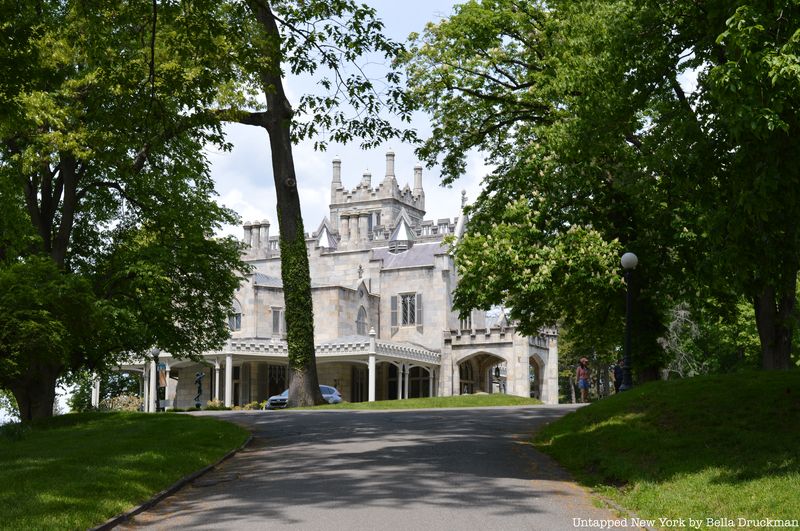
Lyndhurst Mansion, located in Tarrytown, New York, is evidence of the glory of the Hudson River Valley mansions. Unlike mansions like Wyncliffe Mansion that have fallen into disrepair due to decades of neglect, Lyndhurst Mansion is regularly maintained and improved.
Alexander Jackson Davis, an esteemed New York architect, constructed Lyndhurst Mansion in 1838. William Paulding Jr., a former mayor of New York City, commissioned the mansion and appointed Davis for the job because of his exemplary work in the past on projects like the North Carolina State Capitol. Davis would later go on to build New York City’s Federal Hall and Hudson Valley mansion Locust Grove.
Merchant George Merritt and railroad tycoon Jay Gould owned the house after Paulding. After Merritt purchased the property, he doubled its size, adding a north wing, stained glass windows, and elements of French influence. Although Paulding named the mansion Knoll, Merritt later renamed the mansion Lyndenhurst.
Gould purchased the home after Merritt’s death and shortened the name to Lyndhurst. With less ambitious goals than Merritt, Gould used Lynhurst Mansion as his country home until he passed away in 1892. His family, however, added their own touches to the garden.
Today, the mansion is open for tours and special events like weddings. Visitors can partake in five different tours: the Garden and Grounds Tour, the Lyndhurst Ramble Tour, the Hudson River Views Tour, the Classic Mansion Tour, and the Backstairs Tour. However, some tours are temporarily unavailable due to COVID-19.
Check out these top 10 secrets of Lyndhurst Mansion!
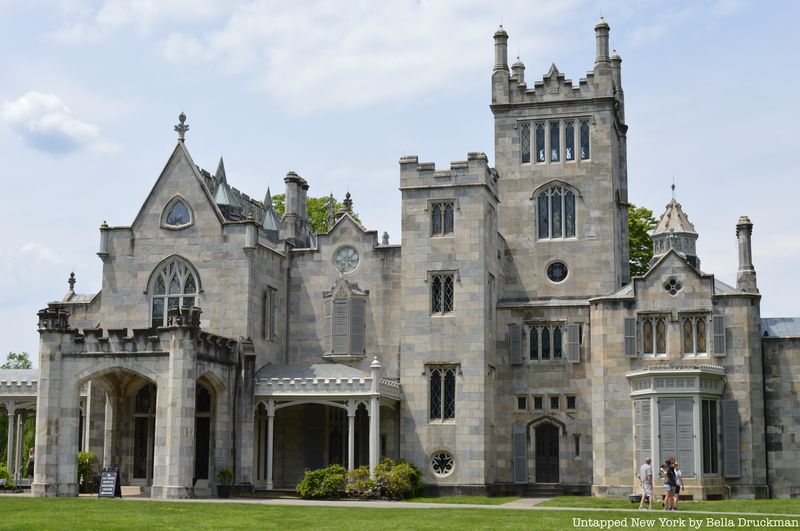
When William Paulding, Jr. owned Lyndhurst Mansion from 1838-1864, he fancied his home a villa in the Hudson River Valley. Davis designed the home in the romantic Gothic Revival design style, characterized by the pointed arch, the rib vault and the flying buttress. However, these characteristics were dispersed asymmetrically throughout the home.
Contrasting the symmetrical homes of the time, architectural critics were fascinated by the home. They called the mansion “Paulding’s Folly” because of the boldly placed buttresses and arches that added to the asymmetrical design. When looking at the home straight on, one can see that various geometrical portions of the portions do not resemble any form of symmetry.
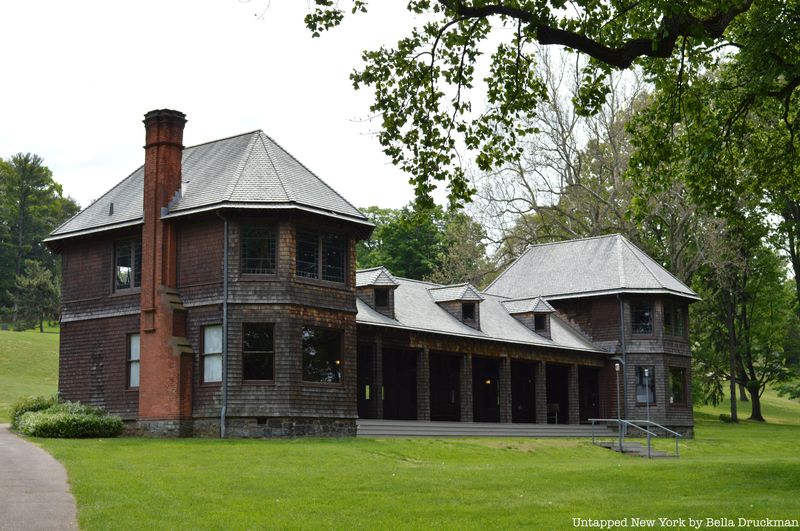
Helen Gould, daughter of Jay Gould, inherited the mansion in 1892. Diverging from her father’s career in the railroad industry, Gould devoted her time to philanthropy. Using the expansive property to her advantage, Gould hosted events and classes to educate and benefit children in the Tarrytown area. The Lyndhurst Sewing school was a product of these efforts.
During sewing classes, girls learned basic sewing skills such as embroidery. Gathering oftentimes on the lawns designed by Davis, the girls laughed and chatted as they learned skills deemed necessary for them at the time. These lessons mobilized her students, allowing them to work in their own homes rather than for other, wealthier women.
On Mother’s Day in 1912, a “New York Times” article claimed that Gould entertained 300 mothers of her students. The article stated, “Miss Gould received and welcomed each mother, and made a short address. She said she was glad to see so many mothers present, for their presence showed their interest in their children’s work.”
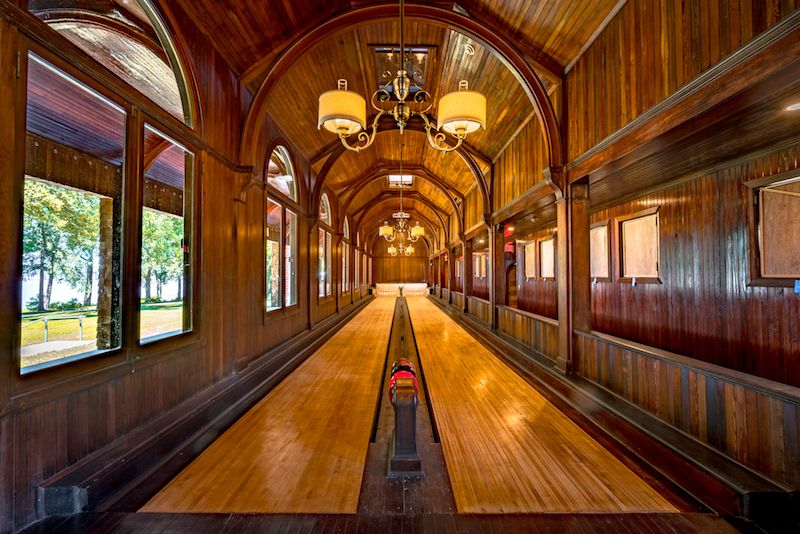
In addition to educating the children of Tarrytown, Helen Gould aimed to improve Lyndhurst Mansion in the architectural sense. In 1894, she built a bowling pavilion and recreation center on property to add to the already luxurious lifestyle of those who lived there. However, the recreation center was created for the community as well, acting occasionally as the site for her sewing classes.
Said to be one of the first regulation bowling alleys in the nation, the two alley bowling lane survives to this day. When the National Trust for Historic Preservation gained possession of the mansion in 1961, they found that the bowling alley had fallen into disrepair after decades of neglect. Over the next six decades, many would work to refurbish the bowling alley, often pausing when money ran out. Officially completed since 2017, tourists can visit the bowling alley and book the lanes for private events.
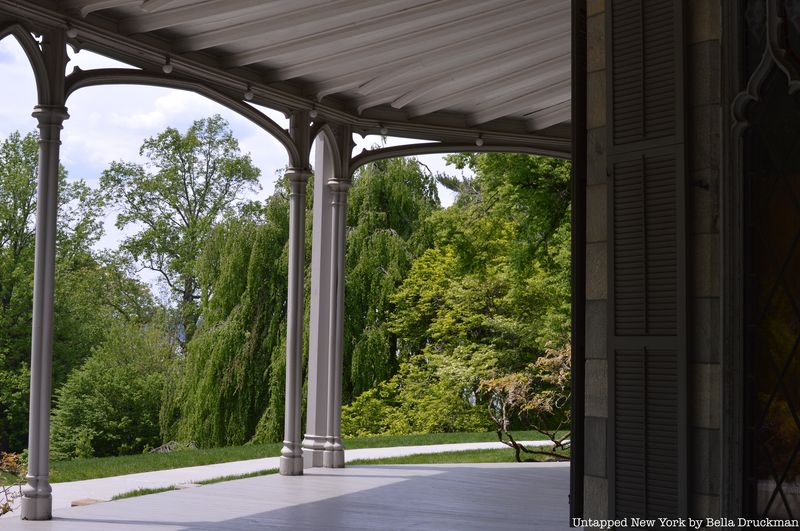
Helen Gould passed the mansion off to her younger sister, Anna, Duchess of Talleyrand-Perigord, following her death in 1938. Spending most of her time at the Plaza Hotel, the mansion sat amongst the linden trees, used only as a country home. Due to the mansion often being empty, Anna allowed World War II soldiers to relax at the mansion after the war.
Named a Knight of the Legion of Honor after providing a home for blind French soldiers, Anna Gould often helped soldiers in whatever way she could manage. This is why she felt so compelled to allow soldiers to rest at Lyndhurst. Following her death, a “New York Times” report noted the mansion was valued at $5,473,011.
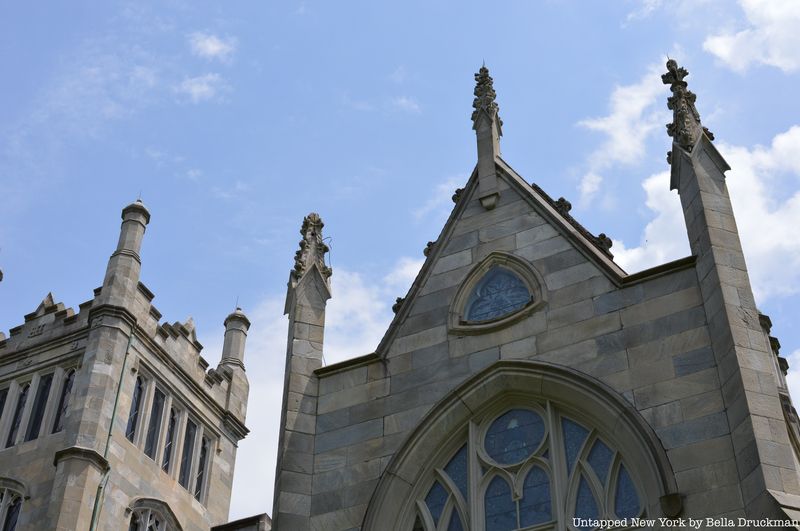
When Helen Gould desired a Natatorium, she built a pool on property around 1911. Inspired by the Roman Baths that were popular at the time, many called the pool “Helen’s Bath.” The building that enclosed the pool was surrounded by columns and covered by a glass skylight. No one attended to the pool when coal was unavailable to heat the boilers during World War II.
Although the pool was closed to the public for 40 years, it once again opened to the public in 2020. Although a site to see on the Garden and Grounds tour, the pool is also open for the “Watershed Moment” site-specific art installation. According to artist Jorge Otero-Pailos, the exhibit “invites visitors to pause and reflect on the memories, both personal, social, and environmental, that define each of us.”
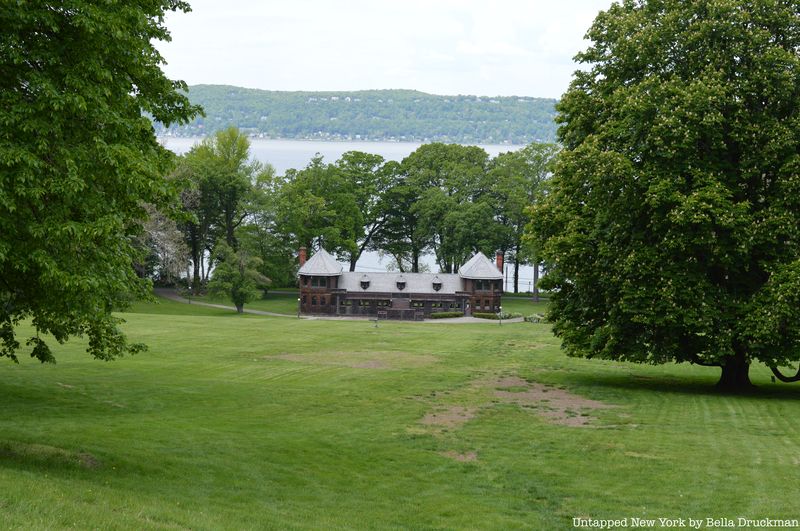
Due to its beautiful architecture, producers of films and television shows continue to use Lyndhurst Mansion for their sets. An inspiration to the aura of many fictional works, the mansion has appeared in The Night Dracula Saved the World, All My Children, and Winter’s Tale.
However, the mansion has appeared in factual shows, such as The Men Who Built America. This short documentary series follows the lives of Cornelius Vanderbilt, John D. Rockefeller, Andrew Carnegie, J. P. Morgan, and Henry Ford as their innovations change America. Designers on an episode of Project Runway also found inspiration from the mansion.
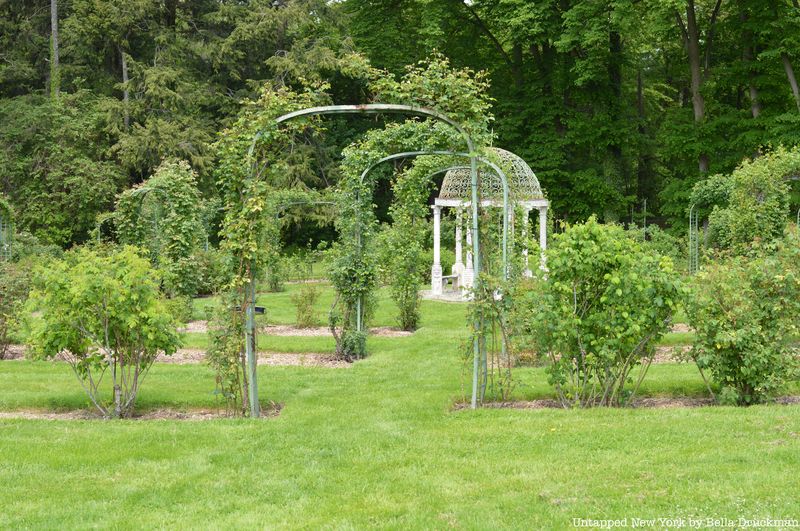
Alexander Jackson Davis is a legendary architect known for his design, rather than structure or theory. Designing more than a 100 homes in the Gothic Revival and Italianate styles, much of Davis’ work still exists today. His skills with watercolors allowed him to create the designs himself.
In terms of landscape design, Davis strove to use it to enhance the picturesque style of his architecture. He collaborated with Andrew Jackson Downing to create The Architecture of Country Houses and The Horticulturist. These texts, along with his landscape work, popularized his style.
At Lyndhurst, Davis worked with Ferdinand Mangold, a German immigrant, to create a private arboretum and gentleman’s farm on the property. Weeping beeches, copper beech trees, and larch trees greet guests as they traverse into the property.
The rose garden, commissioned during the Helen Gould Shepard era of Lyndhurst, originally housed pink roses. Now, the rose garden holds 500 different types of roses. Although the roses are currently not in bloom, visitors can explore the garden and stand in the gazebo structure surrounded by the circular rose garden.
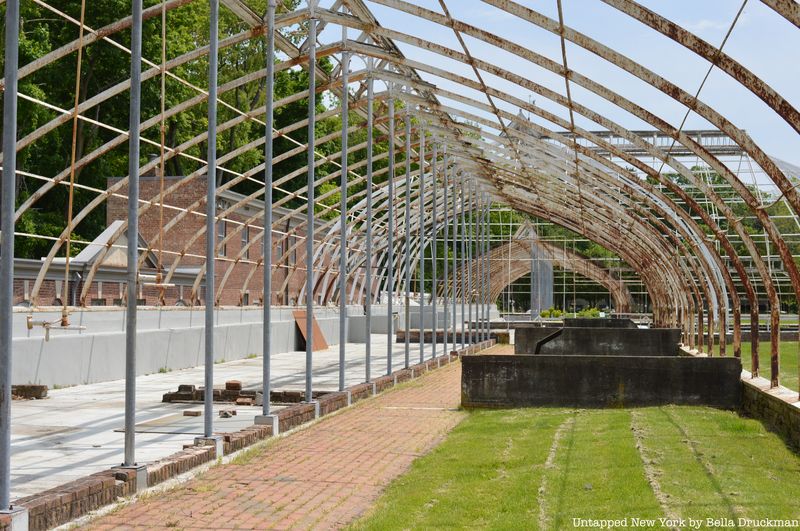
Davis’ landscape ideas are not the only ones that have touched the landscape of Lyndhurst Mansion. Lord & Burnham, a boiler and greenhouse company, built a large private greenhouse on the estate. Despite Jay Gould’s notorious reputation, he often spent time in the greenhouse tending to his orchid and rose collection.
After Anna Gould took over the home, she sold her father’s orchid collection to raise money for the Red Cross and neglected the greenhouse. Following her death, the National Trust for Historic Preservation aimed to restore the greenhouse to its original glory. On the Gardens and Grounds Tour that is available Friday-Sunday for $18 a person, visitors can tour the greenhouse along with other aspects of the garden.
In it skeletal state, visitors can only wonder what the greenhouse looked like in its glory. As they clean off the rust and fallen bricks in their memory, visitors can imagine the various plants that once thrived in the 14 rooms that maintained optimal growing conditions for the plants within them.

One of the longest continuously-running sporting events in the U.S. will occur at Lyndhurst Mansion on June 12 and 13, 2021. This event, the Westminster Kennel Club Dog Show, will determine which dog is not only the best in the show, but the best in the United States. The competition usually occurs at Madison Square Garden, but will take place at Lyndhurst this year because of its spacious land.
Directors of the competition considered Lyndhurst because it merges a deep history of architecture with the deep dog history of the show. Although casual bowling competitions occur at the mansion, this dog show is the first competition of its kind at the mansion.
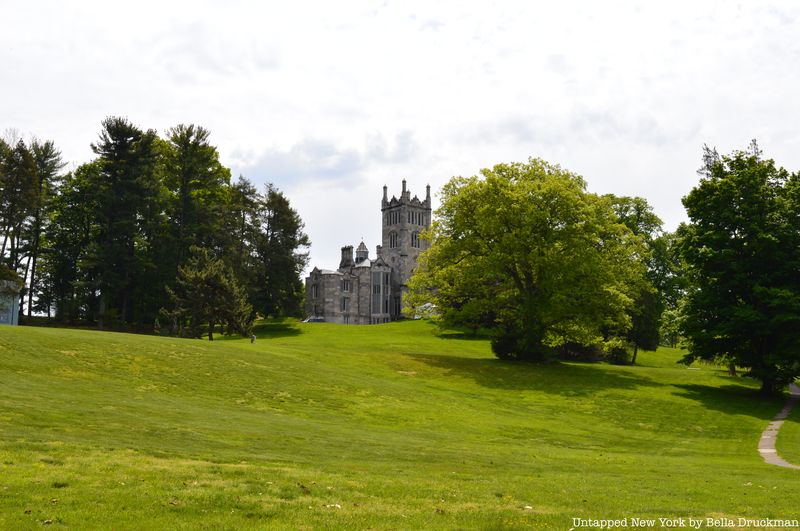
One of the surviving Hudson River Valley mansions, Lyndhurst is a site for sore eyes. However, Executive Director Howard Za aims to bring the mansion past the peak of its glory. During five stages of restoration, Za hopes to “recreate the historic rockeries, estate kitchen garden, and fruit orchard; rebuild the massive treehouse; create allees shaded by flowering trees; and provide a guided, ADA-accessible path from Lyndhurst to the Hudson River.”
His 5 phases of restoration ensure this progress. Currently in phase one, lower landscape restoration, the restoration team repaired paths and built benches, among other tasks. In the next four steps, the team will focus on the mansion landscape and rose garden, Carriage Drive replanting, restoration of the aqueduct and the swim tank landscape, and campaigning to restore greenhouse. These restorations will just add to the omnipresent beauty of Lyndhurst Mansion.
Subscribe to our newsletter